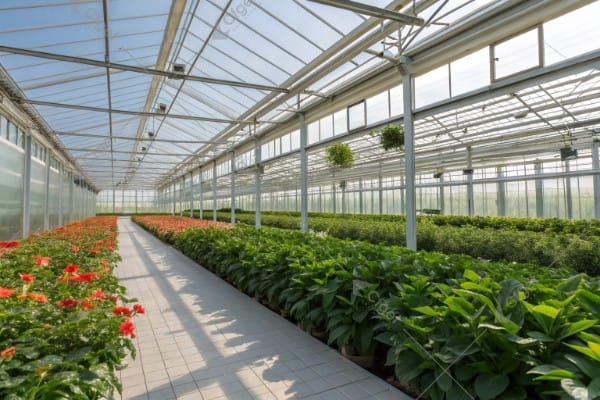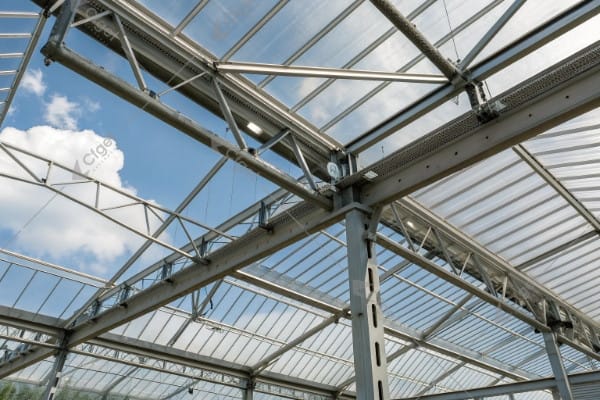Are you struggling with poor soil quality and limited growing space? Action: Imagine growing lush, healthy plants year-round, regardless of external conditions. Solution: A hydroponic greenhouse offers the key.
A hydroponic greenhouse combines soilless growing techniques with a controlled greenhouse environment. This lets you grow plants using nutrient-rich water solutions instead of soil, optimizing growth and yield within a protected space. It is a very useful method.

Hydroponic greenhouses are gaining popularity. People want to explore efficient, sustainable food production methods. Let’s explore this further.
Don’t miss out: ——Everything about hydroponic systems
Hydroponics in a Greenhouse: Combining the Best of Both Worlds?
Traditional farming faces many hurdles. These include weather dependence, pests, and soil degradation. Action: Imagine a method that bypasses those issues. Solution: Marrying hydroponics and greenhouses offers a game-changing approach.
Hydroponics in a greenhouse combines the controlled environment of a greenhouse with the efficiency of soilless cultivation. This synergy offers optimal conditions for plant growth, maximizing yields and minimizing resource use. Growers find it very helpful.
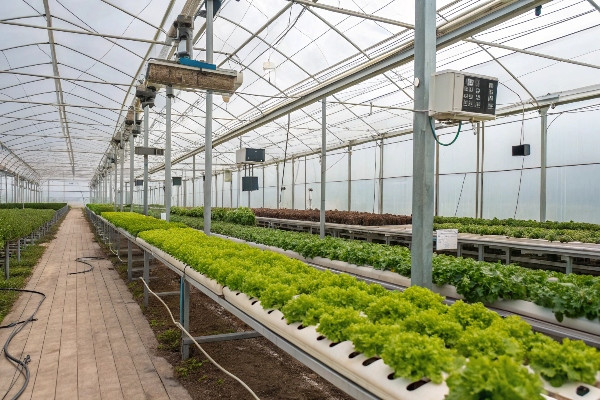
| Feature | Hydroponics | Greenhouse | Hydroponic Greenhouse |
|---|---|---|---|
| Growing Medium | Nutrient-rich water solution | Soil (traditionally) | Nutrient-rich water solution |
| Environment | Can be indoors or outdoors, less control | Controlled temperature, humidity, light | Highly controlled temperature, humidity, light |
| Water Use | Highly efficient, recycles water | Can be efficient with proper irrigation | Extremely efficient, recycles water in a closed loop |
| Pest/Disease | Reduced risk due to controlled environment | Reduced risk compared to open-field farming | Significantly reduced risk due to dual control |
| Yield | Potentially higher than soil-based methods | Potentially higher than open-field farming | Maximized yield due to optimized conditions |
| Season | Year-round growing | Year-round growing | Year-round growing |
| Crops Types | Leafy greens, herbs, some fruits | Wide Variety of Crops | Leafy greens, herbs, some fruits |
Combining these systems offers several advantages. Hydroponics allows for precise control over nutrient delivery. This promotes faster growth and higher yields. The greenhouse provides a controlled environment, protecting plants from pests, diseases, and extreme weather. Together, they create a highly efficient and productive growing system. I remember one client in Southeast Asia who struggled with consistently high humidity. By using a hydroponic greenhouse, he could control the environment and prevent fungal diseases that previously plagued his crops. Many of CFGET’s customers in Southeast Asia face this.
How Does a Hydroponic Greenhouse Work? A Step-by-Step Explanation?
Traditional farming methods often involve a lot of guesswork. Action: Imagine knowing precisely what your plants need at every stage. Solution: A hydroponic greenhouse gives you precise control.
A hydroponic greenhouse works by delivering nutrients directly to plant roots via a water solution, within a climate-controlled structure. The system monitors and adjusts factors. It manages light, temperature, and humidity for optimal plant growth.
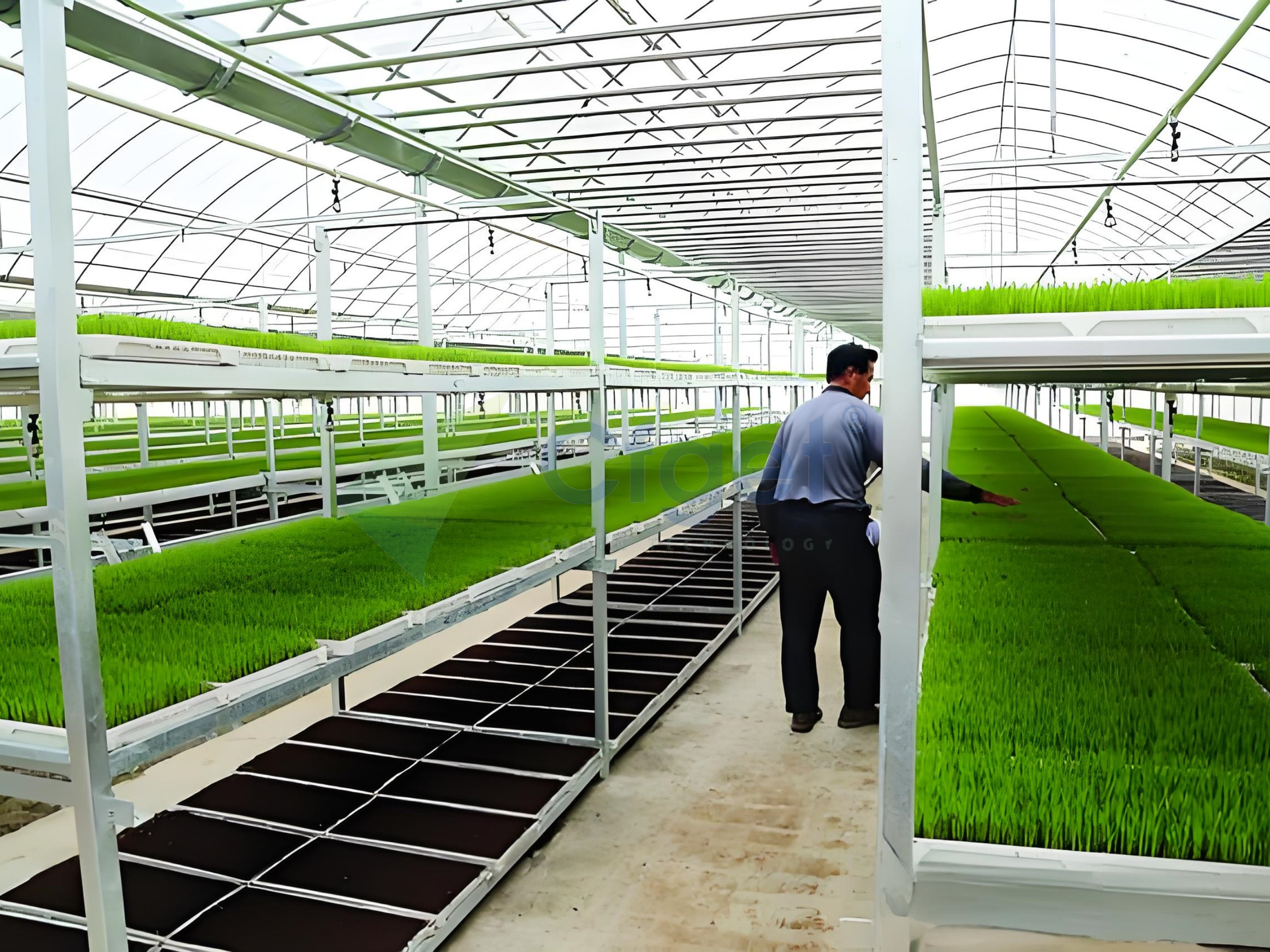
Here’s a basic breakdown:
- Nutrient Solution: Plants don’t get nutrients from the soil. They get them from a carefully balanced mixture of water and mineral salts. We often call this "water and fertilizer" mix. The specific ratio varies. It depends on the crop and its growth stage. For leafy greens like lettuce, spinach, and Chinese cabbage, a cycle of 30-35 days is typical. This fast turnaround maximizes vegetable production.
- Delivery System: The nutrient solution is delivered to the plant roots. Several methods, include deep water culture (DWC), nutrient film technique (NFT), and drip irrigation. In DWC, roots are submerged in the solution. NFT involves a shallow stream of solution flowing over the roots. Drip irrigation delivers the solution directly to the base of each plant. Some crops, like potatoes, benefit from misting systems. They need thin roots.
- Support Structure: Since there’s no soil, plants need physical support. This is often provided by inert media like Rockwool, perlite, or coco coir. These materials hold the plants in place. They allow for good aeration and drainage.
- Environmental Control: The greenhouse structure provides a controlled environment. It protects plants from external factors. Temperature, humidity, and light levels are carefully regulated. This optimizes photosynthesis and growth. Ventilation and cooling are crucial, especially in warmer climates. In some regions, growers use closed environments, like plant factories. In containers, they use hydroponics.
- Monitoring and Adjustment: Sensors and control systems monitor the environment and nutrient solution. They will adjust automatically. Growers can also make manual adjustments. This is to maintain optimal conditions. This requires some initial trial and error for new hydroponic growers. They will get the hang of it.
About 70% of hydroponic growers, in my experience, use greenhouses. This number tells you something important. The synergy between these two methods is powerful.
Benefits of Hydroponic Greenhouses vs. Traditional Greenhouses?
Traditional greenhouse growing, while better than open-field farming, still has limitations. Action: What if you want to do even better. Solution: Hydroponic greenhouses1 offer a significant upgrade.
Hydroponic greenhouses offer several advantages over traditional soil-based greenhouses. Faster growth rates, higher yields, reduced water usage, and lower risk of pests and diseases are some of them.
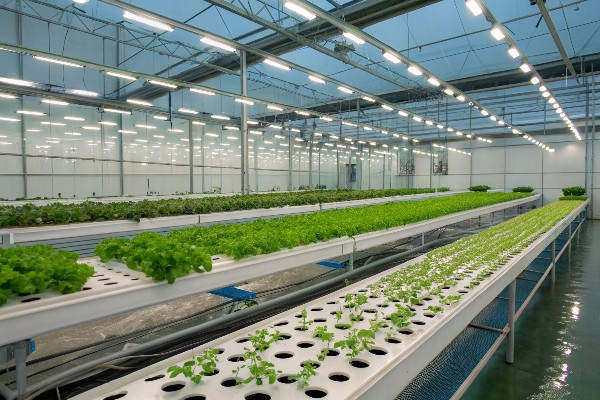
| Feature | Traditional Greenhouse (Soil-Based) | Hydroponic Greenhouse |
|---|---|---|
| Growth Rate | Slower | Faster, due to direct nutrient delivery |
| Yield | Lower | Higher, due to optimized conditions |
| Water Usage | Higher | Significantly lower, water is recycled |
| Pest & Disease | Moderate risk | Lower risk, due to controlled environment and lack of soil |
| Nutrient Control | Less precise | Highly precise, nutrients are directly delivered to the roots |
| Space Efficiency | Lower | Higher, plants can be grown closer together |
| Labor Cost | High | Low |
| Location Requirement | Arable Land | Anywhere |
Let’s break down some of these benefits:
- Faster Growth and Higher Yields: In a hydroponic system, plants receive readily available nutrients. This leads to faster growth and higher yields compared to soil-based systems. I’ve seen clients achieve remarkable results. Their production increased dramatically after switching to hydroponics.
- Water Conservation: Hydroponic systems recycle water. This can reduce water usage by up to 90% compared to traditional methods. This is extremely important in water-scarce regions.
- Reduced Pest and Disease: The controlled environment of a greenhouse, combined with the absence of soil, minimizes the risk of pests and diseases. This reduces or eliminates the need for pesticides.
- Precise Nutrient Control: Hydroponics allows for precise control over nutrient delivery. This ensures that plants receive the exact nutrients they need at each stage of growth.
- Fish and vegetable symbiosis is also a method. Customers like it.
The biggest challenge with hydroponics is getting the nutrient mix right. It takes practice, but the rewards are worth it. CFGET has worked with growers in over 20 countries. We’ve seen the positive impact of hydroponics firsthand.
Types of Hydroponic Systems for Greenhouse?
Z So, you’re sold on the idea of a hydroponic greenhouse. But which system is right for you? Action: Let’s examine the options. Solution: Several hydroponic systems can be adapted for greenhouse use.
Several types of hydroponic systems are suitable for greenhouses. These include Nutrient Film Technique (NFT)2, Deep Water Culture (DWC)3, drip systems, and aeroponics. The best choice depends on the crop and the grower’s preference.
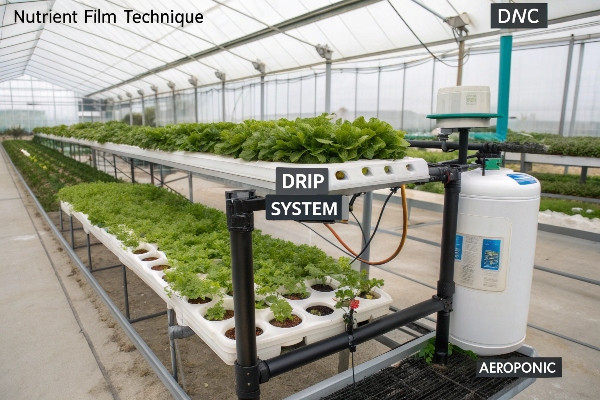
| System Type | Description | Advantages | Disadvantages | Suitable Crops |
|---|---|---|---|---|
| Nutrient Film Technique (NFT)2 | A shallow stream of nutrient solution continuously flows over the plant roots. | Efficient water and nutrient use, good for fast-growing plants. | Susceptible to power outages, not ideal for plants with large root systems. | Lettuce, spinach, strawberries, herbs |
| Deep Water Culture (DWC)3 | Plant roots are suspended in a well-aerated nutrient solution. | Simple and inexpensive to set up, good for larger plants. | Requires constant aeration, can be prone to temperature fluctuations. | Lettuce, kale, larger herbs, peppers, tomatoes |
| Drip System | Nutrient solution is delivered to the base of each plant through small tubes. | Versatile, can be used with various growing media, good for larger plants. | Requires more maintenance, can be prone to clogging. | Tomatoes, peppers, cucumbers, larger plants generally |
| Aeroponics | Plant roots are suspended in air and periodically misted with nutrient solution. | Extremely efficient water and nutrient use, excellent oxygenation of roots. | More complex and expensive to set up, requires precise control. | Lettuce, herbs, strawberries, some root crops (with modifications) |
| Tower Hydroponics | Vertical Stacking | High efficiency, space saving | High Cost | Leafy Greens |
| Multilayer Hydroponics | Layer-by-layer Stacking | High efficiency, space saving | High Cost | Leafy Greens |
| Stereo Hydroponics | Use the greenhouse space more | High efficiency, space saving | High Cost | Leafy Greens |
| Pipeline Hydroponics | Pipeline Growing | Good Water and fertilizer use, good for fast-growing plants. | Susceptible to power outages | Leafy Greens |
Here is a little more detail:
- NFT (Nutrient Film Technique): This is a popular choice for leafy greens. A thin film of nutrient solution flows continuously over the roots. This provides constant access to nutrients, water, and oxygen.
- DWC (Deep Water Culture): In this system, the plant roots are submerged in a nutrient solution. An air pump provides oxygen to the roots to prevent them from drowning.
- Drip Systems: These systems deliver nutrient solution directly to the base of each plant. They work with a variety of growing media.
- Aeroponics: This is a more advanced technique. The roots are suspended in air and misted with nutrient solution.
Choosing the right system depends on the specific crops you want to grow. It also depends on your budget, and your level of experience. CFGET offers design, manufacturing, and technical support for all these systems. We help our clients find the best solution for their needs.
Conclusion
Hydroponic greenhouses1 offer a powerful way to grow plants. They are more efficient and sustainable than traditional methods. They combine the benefits of controlled environment agriculture with the advantages of soilless cultivation. It’s a win-win.
Explore the advantages of hydroponic greenhouses, including faster growth and higher yields, to enhance your gardening knowledge. ↩ ↩
Learn about NFT, a popular hydroponic system that maximizes nutrient delivery for faster plant growth. ↩ ↩
Discover how DWC can simplify your hydroponic setup while ensuring healthy plant growth with efficient nutrient access. ↩ ↩



